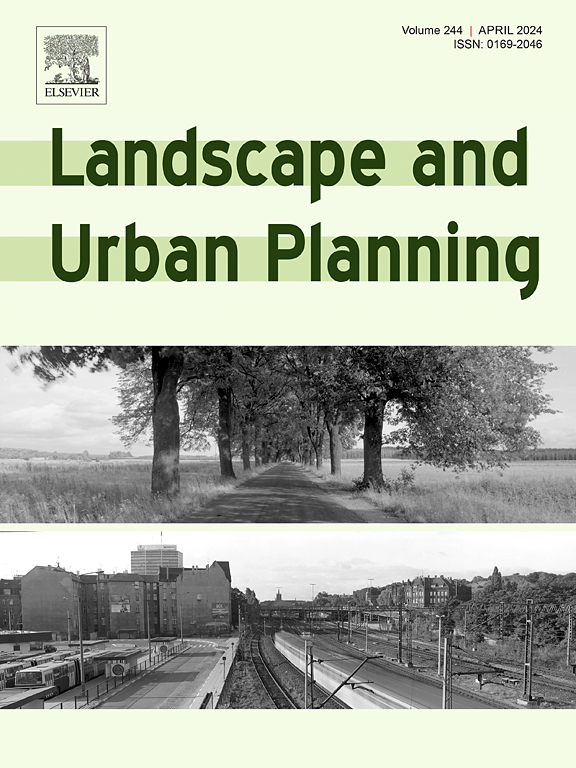Where to fly? Landscape influences on the movement and spatial ecology of a threatened apex predator
IF 7.9
1区 环境科学与生态学
Q1 ECOLOGY
引用次数: 0
Abstract
Effectively managing apex predators in human-modified landscapes poses considerable challenges. Habitat fragmentation disperses resources across wider expanses and undermines the ability of apex predators to reach isolated habitat patches as they traverse multi-tenured landscapes comprising unsuitable habitat. Understanding a species response to landscape configuration is key to informing effective management strategies, particularly for threatened, mobile and ecologically important species like apex predators. Here we use GPS tracking data collected from 37 powerful owls (Ninox strenua), an Australian threatened apex predator that occurs across the urban-agricultural-forest gradient, to investigate how landscape characteristics influence their spatial and movement behaviour. We demonstrate that as habitat fragmentation increases, the spatial requirements of powerful owls expand, their home-range shape becomes more intricate and individuals travel further each night, significantly adjusting their movement behaviours and spatial configurations to connect remaining habitat. Landscapes with unified and connected habitats, on the other hand, have smaller spatial requirements, likely due to greater habitat availability that minimises competition for essential resources. This facilitates the establishment of smaller home-ranges and consequently, the occurrence of more territories. Interestingly, landscape characteristics did not influence sequential nightly visitation behaviour, suggesting that powerful owls across all landscape types visit different portions of their home-range each night to exert an unpredictable hunting strategy regardless of local landscape conditions. Our research highlights the importance of integrating the influence of local landscape features and visitation behaviours into decision-making processes. This integration is crucial for informing effective conservation strategies aimed at supporting apex predator survival in disturbed landscapes.

飞向何处?景观对一种濒危顶级掠食者的运动和空间生态的影响
在人类改造过的地貌中有效地管理顶级食肉动物面临着相当大的挑战。栖息地破碎化使资源分散在更广阔的范围内,削弱了顶级食肉动物到达孤立栖息地斑块的能力,因为它们要穿越由不适宜栖息地组成的多期景观。了解物种对景观配置的反应是制定有效管理策略的关键,尤其是对于像顶级食肉动物这样受到威胁、具有流动性和生态重要性的物种。在这里,我们利用从 37 只强大的猫头鹰(Ninox strenua)身上收集到的 GPS 跟踪数据来研究景观特征如何影响它们的空间和移动行为。我们的研究表明,随着栖息地破碎化程度的增加,强力猫头鹰的空间需求也随之扩大,它们的家园范围形状变得更加复杂,个体每晚都会走得更远,从而大大调整了它们的移动行为和空间配置,以连接剩余的栖息地。另一方面,栖息地统一且相互连接的地貌对空间的要求较小,这可能是由于栖息地的可用性更高,从而最大限度地减少了对基本资源的竞争。这有利于建立较小的家园范围,从而形成更多的领地。有趣的是,地貌特征并不影响夜访行为的先后顺序,这表明无论当地地貌条件如何,所有地貌类型的强力猫头鹰每晚都会访问其家域的不同部分,以实施不可预测的狩猎策略。我们的研究强调了将当地景观特征和拜访行为的影响纳入决策过程的重要性。这种整合对于制定有效的保护策略,支持顶级掠食者在受干扰地貌中生存至关重要。
本文章由计算机程序翻译,如有差异,请以英文原文为准。
求助全文
约1分钟内获得全文
求助全文
来源期刊

Landscape and Urban Planning
环境科学-生态学
CiteScore
15.20
自引率
6.60%
发文量
232
审稿时长
6 months
期刊介绍:
Landscape and Urban Planning is an international journal that aims to enhance our understanding of landscapes and promote sustainable solutions for landscape change. The journal focuses on landscapes as complex social-ecological systems that encompass various spatial and temporal dimensions. These landscapes possess aesthetic, natural, and cultural qualities that are valued by individuals in different ways, leading to actions that alter the landscape. With increasing urbanization and the need for ecological and cultural sensitivity at various scales, a multidisciplinary approach is necessary to comprehend and align social and ecological values for landscape sustainability. The journal believes that combining landscape science with planning and design can yield positive outcomes for both people and nature.
 求助内容:
求助内容: 应助结果提醒方式:
应助结果提醒方式:


